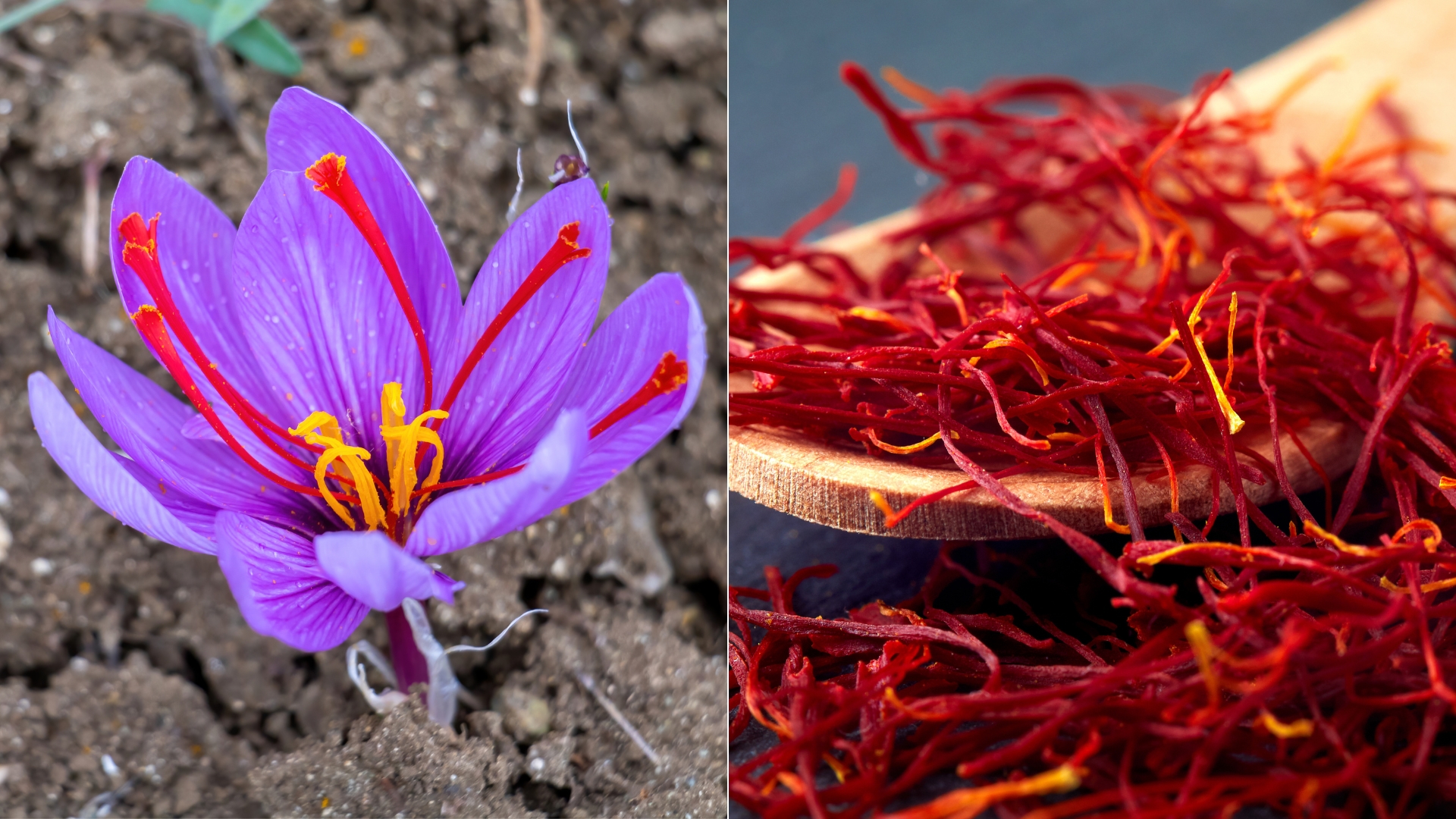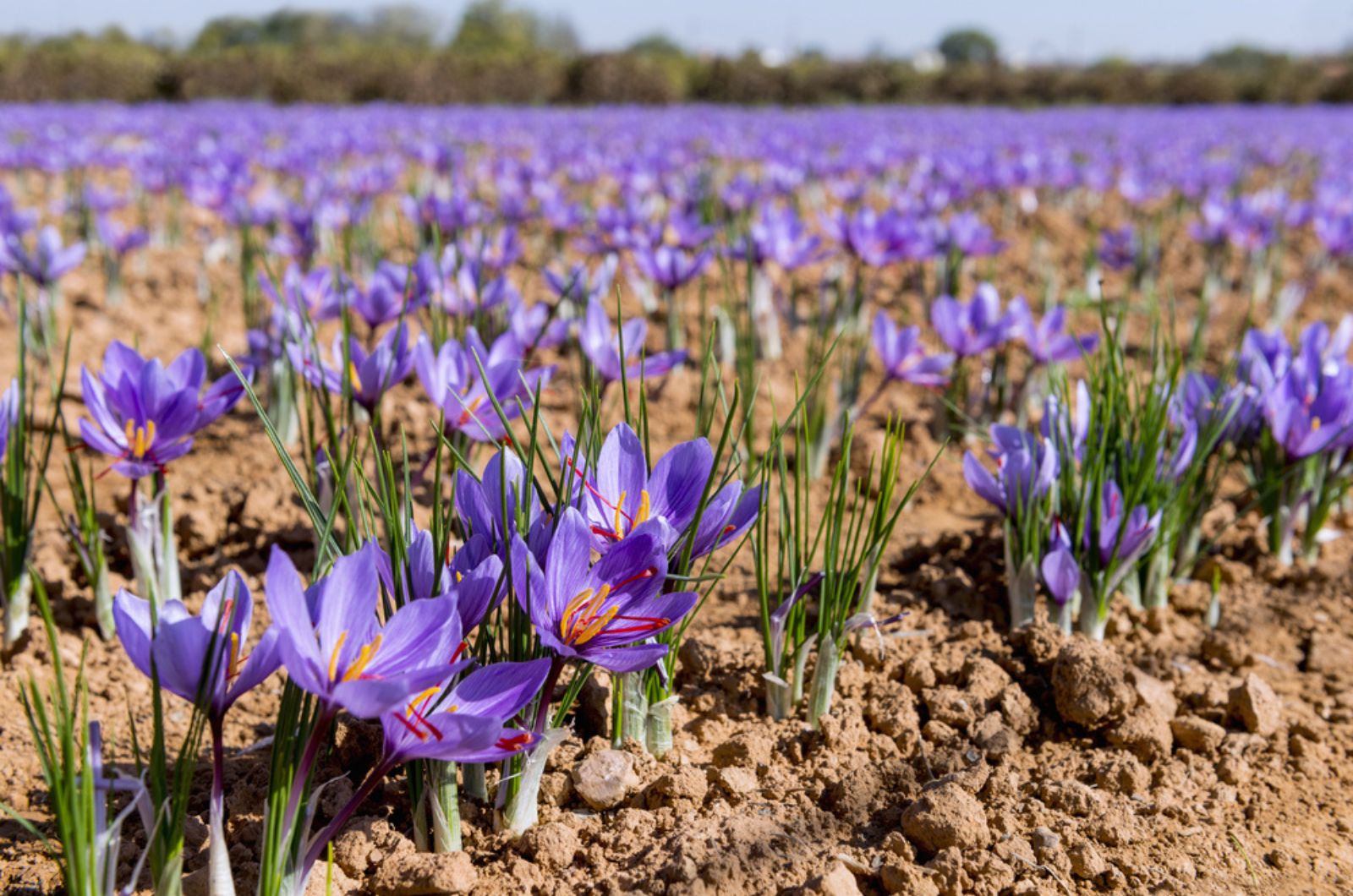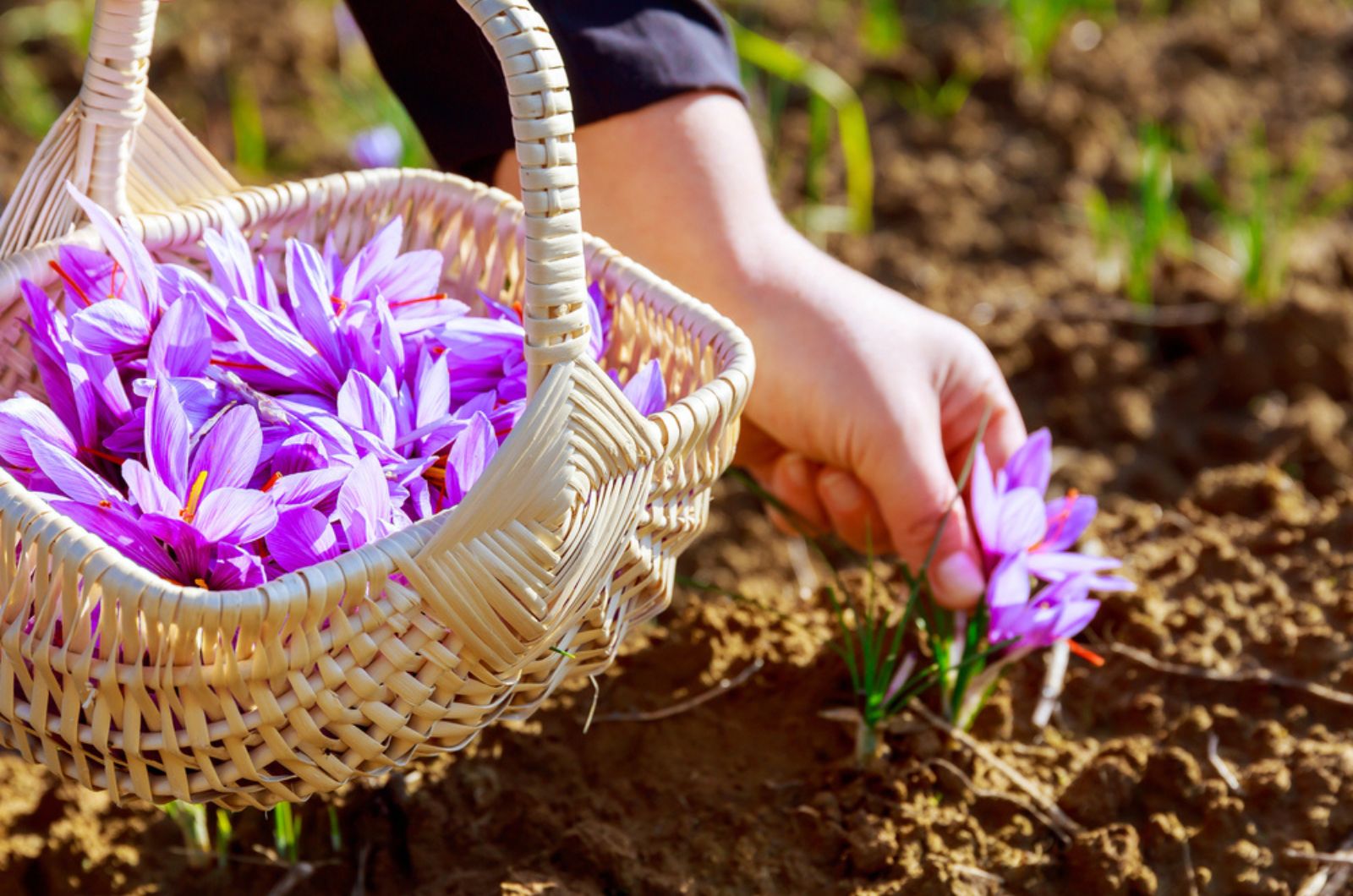If you are planning to grow saffron crocus, then you have come to the right place.
This magical plant will not only make your garden look more beautiful and vibrant, but it will also provide you with one of the most expensive spices in the world – and for free!
Saffron crocus is a rarity that is not so hard to grow, and its cultivation is truly a rewarding experience. In this article, we are going to cover how to plant and harvest saffron crocus.
So, if you want to get the taste of it, stay tuned!
What Is Saffron?
If you are not familiar with saffron, it is one of the most pricey spices in the world!
It is derived from the saffron crocus, otherwise known as Crocus sativus. This prized spice is produced by drying the stigmas of the plant’s flower, and every flower has only three filaments, which is why it takes about 75,000 flower bulbs to make only one pound of saffron! [1]
What also makes it special is that the flowers can only be harvested for a short period of time, when the flowers are open.
It has a prominent red color and earthy flavor with a little touch of sweetness like vanilla. Saffron has been used for centuries in cooking, medicine, and even as a dye due to its unique properties.
Can You Get Saffron From Any Crocus?
While there are various species of crocus, saffron is specifically obtained from the persian flower saffron crocus (Crocus sativus).
This plant is distinct from other crocus species, as it produces the three vivid crimson stigmas, commonly known as “saffron threads” or “saffron strands,” which are the valuable part of the spice.
However, it often gets mixed up with the autumn crocus, so be extra careful when you are buying the plant, especially because the latter one is poisonous and can make you sick.
How To Plant Saffron Crocus
You would be surprised by how easy it actually is to plant and grow saffron crocus. These flowers grow like crazy, and they don’t even have any special requirements!
Now, we are going to cover step-by-step how to plant it, and what is important to do afterwards.
Let’s dive in!
1. Get The Good Bulbs
Start by obtaining high-quality saffron crocus bulbs from your nursery or garden shop. It is important that they are not moldy and that there are no signs of damage.
If you put off planting during very warm weather, the bulbs might sprout. Sprouting bulbs can still be planted, just make sure that you don’t leave them lying around for too long.
2. Find The Perfect Spot
It is important that they have enough space so that they can multiply year after year. Choose a planting location where your saffron crocus can receive at least a few hours of direct sunlight during the day.
You don’t have to worry about temperatures as much since these plants are very hardy to low temperatures.
However, you have to pay attention to soil type. They will not grow in heavily compacted soils that stay wet for too long. Instead, choose a well-draining one with a pH level between 6 and 8.
3. Planting Time
The best time to plant your saffron crocus is in the fall, anytime between September and November – just make sure to do it before the first ground-level frost.
Like all bulbs, they must be planted with the pointy end facing up and the root end buried deeply (about 6 inches deep). If you are burying sprouted bulbs, some parts will stick above the ground, so don’t worry!
4. Mulching & Watering
Give your bulbs plenty of water immediately after planting. They will need it, especially in the fall and spring, when the bulb is about to flower and they start splitting and self-propagating.
Water the newly planted bulbs thoroughly, but avoid overwatering, as saffron crocus prefers a slightly dry period during the dormant season.
Adding a thick layer of mulch will also help retain moisture and suppress weed growth. Since it is fall, you can add dry leaves. You can harvest them about six weeks after planting (although this varies depending on the weather and planting time).
How To Harvest Saffron Crocus
If you are lucky enough, your saffron crocus will bloom for about a week or so, even though they have a much shorter blooming period. Once the flowers open, use a clean pair of tweezers to pluck those burgundy-red threads.
You can also pluck the entire flower but I don’t think that is necessary if you are only interested in making saffron spices.
To avoid cutting the saffron in half using tweezers, don’t squeeze them too tightly. You can also pick up the strands with your fingers, just make sure to do it as close to the center of the flower as you can.
Make sure to have an empty dish or something to put the strands in as they are delicate and can easily be blown away.
After harvesting, put them on a paper towel, place them on a warm spot with plenty of sunlight, and let them dry – just make sure that it isn’t windy. Then, transfer them to a jar and put them somewhere dry and dark.
Properly stored saffron can retain its flavor and color for up to two years!
Leave the rest of the plant to naturally die back. Don’t remove any leaves as they are needed to redirect energy towards the bulb.
There you go. Now, you have saved a ton of money by simply growing your own saffron crocus. Save your saffron and use it wisely!
References: 1. Grannan C. Why Is Saffron So Expensive? Britannica




